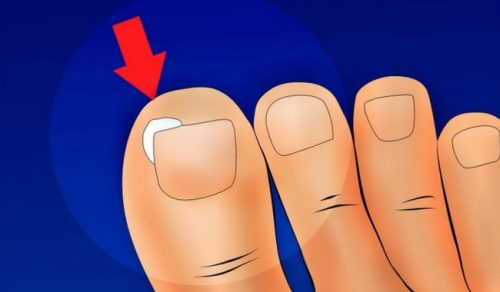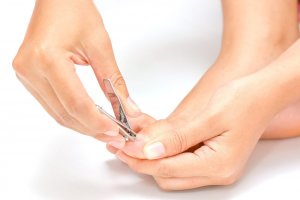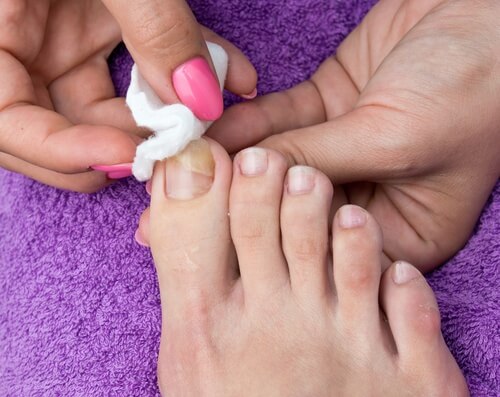Prevent and Treat Ingrown Toenails - Learn How Here!

If you keep the nails on your toes healthy, they’ll not turn your days into a nightmare when having to walk or wearing shoes. In this article, we’ll tell you how to prevent and treat ingrown toenails.
Ingrown Toenails: Why They Happen
It is essential to know how we can prevent and treat ingrown toenails. The reason it is necessary is that the nails on our toes play an important role as a barrier to prevent bacteria entering the body.
As well as cutting them for aesthetic reasons, keeping them in good condition is essential for our health and hygiene. It is therefore very important to know that a poorly cut toenail can cause many problems.
If we have a toenail that has grown into our skin and add wearing tight or pointy shoes, the problem gets worse and can become so painful that we can’t think about anything else.
Ingrown toenails are painful and also cause reddening and inflammation of the toe area because of the pressure. In more extreme cases, pus can also appear.
Read on to learn how you can prevent and treat ingrown toenails!
See also: 5 Tricks to Eliminate Nail Fungus & Strengthen Nails
How to Prevent Ingrown Toenails
Caring for the nails on your toes is always essential, not just if we are prone to ingrown toenails.
Maintaining them in good condition is not a complicated task and doesn’t cost a lot of money. If we are consistent, we can do it ourselves at home.
It is very important to have the right tools and to be very careful.
We also recommend that you always keep your toenails short and straight to prevent them from getting embedded. You should cut them approximately every 3 weeks or once a month.
Cut Your Toenails Correctly So That They Don’t Become Ingrown

If we are prone to ingrown toenails, then we should pay a lot of attention when we cut them. In this way, we’ll prevent them.
We can turn to a professional or be very careful when cutting the nails on our toes ourselves to avoid additional pain.
Take advantage of an afternoon at home to give your toenails a complete treatment.
What You Need
- Exfoliating soap
- Cuticle remover
- Straight nail clippers
- Cardboard nail file
- Toothpick
What You Should Do
- Before you start, we recommend you soak your feet in tepid water. You can add lavender flowers, eucalyptus or Epsom salts, for example.
- Soak your feet for around 15 minutes so that the nails on your toes soften and it becomes easier to cut them.
- Then exfoliate your feet well (emphasizing the heels) and give them a massage. Don’t forget to rinse them and dry them well with a soft towel.
- Next, apply the cuticle remover to soften the area and remove excess skin with the toothpick.
- Cut your toenails straight so that they are square. You can use the nail file to help.
Don’t cut your toenails too short at the corners because this increases their chances of becoming ingrown.
This article is about how to prevent and treat ingrown toenails, right? Of course, for this reason, we have given you advice on proper toenail care. On the other hand, you may already have a painful ingrown toenail. If this is your case, keep reading to find out how to cure it.
The Cotton Wool Ball Technique for Ingrown Toenails

First, you need to soak your feet well in water that is as hot as you can bear with a handful of Epsom salts for at least 15 minutes.
As well as softening the nails, this also helps to prevent infections.
What You Need
- A cotton wool ball
- Tweezers
- Nail clippers
- Antibacterial salve
- A bandage
What You Should Do
- Cut the toenails in a straight line without sharp points near the edges of the nail.
- With the tweezers, gently lift up the ingrown toenail and place the small cotton wool ball underneath.
- Press on it lightly so that it doesn’t come out and cut off the excess cotton wool that extends beyond the toe.
- Apply the salve or cream to prevent infections and apply the bandage as tight as possible.
- Try not to use very tight shoes or socks for the next few days.
- Change the cotton wool every day or every other day.
Home Remedies for Ingrown Toenails
As well as cutting your toenails correctly or using the cotton wool ball method, there are other very effective home remedies that can help you with this problem:
Water with Iodine Solution
Every day, when you get home from work, take off your shoes and soak your feet in a bowl of tepid water with a measure of povidone-iodine.
This medication is a powerful antimicrobial that fights fungi and other infections and prevents pus from appearing in the ingrown toenail.
Slice of Lemon
The acid of this citrus fruit fights infections and can help to prepare ingrown toenails for cutting.
- Cut a slice of lemon and place it on the affected toenail.
- Wrap it in a bandage and leave it overnight.
Essential Oils

- We recommend tea tree oil (antibacterial and antifungal) and baby oil (which also has a nice scent).
Band-Aids or Plasters
You can reduce the pressure that your toenail exerts on the skin by pulling it back using an adhesive strip or a band-aid. When the area is less reddened and the inflammation goes down, you can proceed to cut your toenail.
We recommend you read: White Spots on the Nails: Where Do They Come From?
Remember not to give yourself a pedicure when you have a toenail that has grown into your skin because you can make it worse. First, reduce the swelling and the infection.
Footwear
A tip to prevent and treat ingrown toenails is to only wear shoes when you need to. At home, go barefoot or use footwear that leaves your toes uncovered.
If you have to use closed toe footwear during the time it takes to cure an ingrown toenail, use wide shoes to avoid pain and to prevent it from getting more ingrown.
Finally, remember to disinfect the pedicure tools you will use to prevent and treat ingrown toenails.
Main image from © wikiHow.com
All cited sources were thoroughly reviewed by our team to ensure their quality, reliability, currency, and validity. The bibliography of this article was considered reliable and of academic or scientific accuracy.
- Informed Health Online [Internet]. Cologne, Germany: Institute for Quality and Efficiency in Health Care (IQWiG); 2006-. Ingrown toenail: Overview. 2018 Jun 28. https://www.ncbi.nlm.nih.gov/books/NBK513138/
- Eidelbaugh, J. J., & Lee, H. (2009, February). Management of the ingrown toenail. American Family Physician, 79(4), 303-308
aafp.org/afp/2009/0215/p303.html - Mayo Clinic Staff. (2014, April 3). Ingrown toenails: Treatments and drugs
mayoclinic.org/diseases-conditions/ingrown-toenails/basics/treatment/con-20019655
This text is provided for informational purposes only and does not replace consultation with a professional. If in doubt, consult your specialist.








